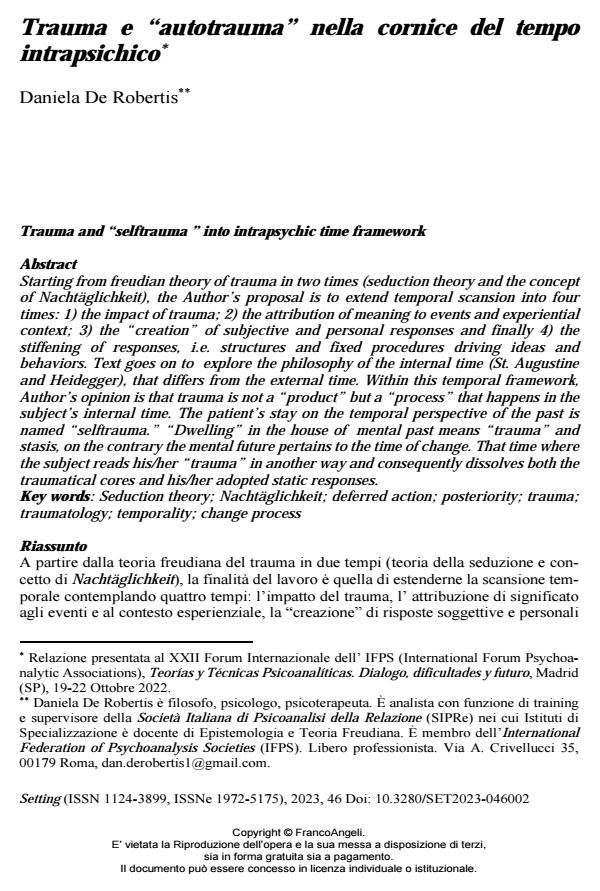Trauma and “selftrauma ” into intrapsychic time framework
Journal title SETTING
Author/s Daniela De Robertis
Publishing Year 2024 Issue 2023/46
Language Italian Pages 17 P. 37-53 File size 228 KB
DOI 10.3280/SET2023-046002
DOI is like a bar code for intellectual property: to have more infomation
click here
Below, you can see the article first page
If you want to buy this article in PDF format, you can do it, following the instructions to buy download credits

FrancoAngeli is member of Publishers International Linking Association, Inc (PILA), a not-for-profit association which run the CrossRef service enabling links to and from online scholarly content.
Starting from freudian theory of trauma in two times (seduction theory and the concept of Nachtäglichkeit), the Author’s proposal is to extend temporal scansion into four times: 1) the impact of trauma; 2) the attribution of meaning to events and experiential context; 3) the “creation” of subjective and personal responses and finally 4) the stiffening of responses, i.e. structures and fixed procedures driving ideas and behaviors. Text goes on to explore the philosophy of the internal time (St. Augustine and Heidegger), that differs from the external time. Within this temporal framework, Author’s opinion is that trauma is not a “product” but a “process” that happens in the subject’s internal time. The patient’s stay on the temporal perspective of the past is named “selftrauma.” “Dwelling” in the house of mental past means “trauma” and stasis, on the contrary the mental future pertains to the time of change. That time where the subject reads his/her “trauma” in another way and consequently dissolves both the traumatical cores and his/her adopted static responses.
Keywords: Seduction theory; Nachtäglichkeit; deferred action; posteriority; trauma; traumatology; temporality; change process
Daniela De Robertis, Trauma e “autotrauma” nella cornice del tempo intrapsichico in "SETTING" 46/2023, pp 37-53, DOI: 10.3280/SET2023-046002